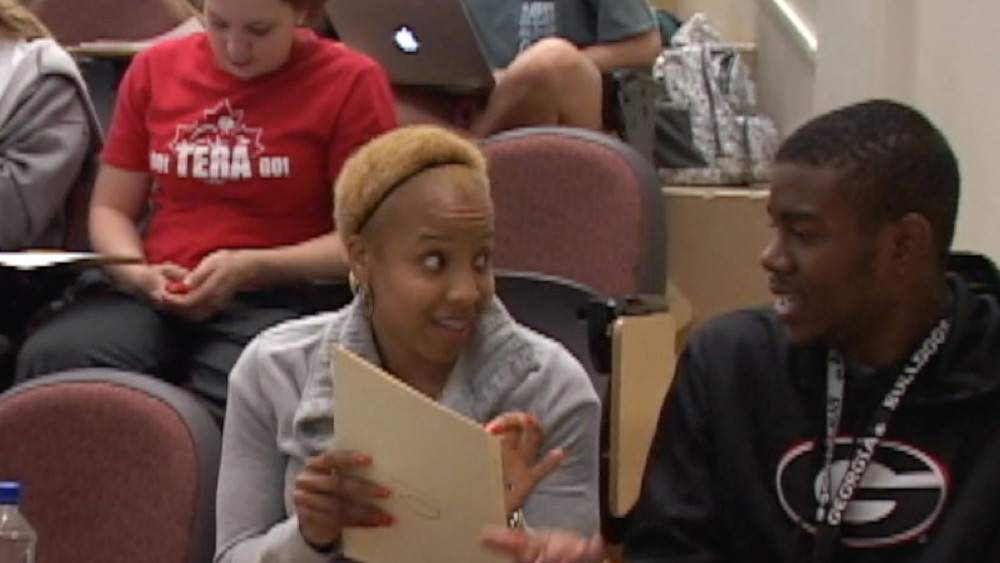By Anna Hatch
Higher education is slowly shifting away from the traditional lecture style to incorporate more active learning into the classroom. While the phrase “active learning” is commonly used among educators, the words can sound foreign if you are unfamiliar with teaching. According to Boots Quimby, Associate Director of Integrated Life Sciences at the University of Maryland (UMD), the definition is simple. “Active learning is anytime a student is doing something besides listening to a lecture,” she explained.

Courses can incorporate different amounts of active learning into the curriculum. For example, a class might be considered 10% active learning when students pause to answer clicker questions throughout the lecture. Similar to a remote control, clickers are an interactive tool students use to answer multiple-choice questions. Professors receive immediate feedback from the clickers as well as statistics about class performance on their computer. This allows them to assess overall class comprehension during a lecture.
Another example of active learning is a flipped classroom. At the other end of the spectrum and considered 100% active learning, flipped classrooms provide students with the content outside of class—typically video lectures or reading material. A major goal of the flipped classroom is to help students master concepts that are not easily answered by a Google search. Another goal is to help students can develop higher-order thinking skills such as analyzing and evaluating.
Helping students develop their own ideas
“I was teaching human genetics to biology majors at UMD. The class was working in small groups, discussing an article. I overheard my students debating alternative interpretations of the data. I stopped for a moment and realized: this is what college education should be—using content to develop your own ideas,” said Quimby.
To foster this, Quimby—with the help of five postdoctoral fellows— recently developed a flipped cell biology curriculum course using the well-known textbook, Molecular Biology of the Cell written by Bruce Alberts and colleagues. In the classroom, instead of listening to a lecture or memorizing facts, students work together in small groups analyzing real data—including microscopy images and western blots. These exercises teach students to draw their own conclusions—as well as acquainting them with the scientific process.
UMD is one of many colleges and universities that have begun to embrace active learning. Research shows active learning increases student performance in science, technology, engineering and math (STEM) fields (see papers here and here). Now educators are putting these results into practice. For example, William Jeffries, associate dean at the University of Vermont College of Medicine, cited this study in the Burlington Free Press as a primary reason the medical school decided to replace all of its traditional lecture courses with active learning.
Resources
- For those in scientific teaching and active learning here are a few helpful resources:
- Teach Students How to Learn, by Saundra Yancy McGuire with Stephanie McGuire
- iBiology offers multiple resources for educators including a Scientific Teaching Series focused on active learning as well as resources for two flipped courses: Cell Biology and Engineering Life. In each flipped course, iBiology videos featuring prominent scientists provide the content outside of the classroom, so that time in class can be spent engaging in conversations and discussing journal articles. iBiology also offers a variety of educator resources that support active learning.
- The Yale Center for Teaching and Learning offers a variety of resources and trainings for scientific teaching.
- Structure Matters: Twenty-One Teaching Strategies to Promote Student Engagement and Cultivate Classroom Equity.





derebe says
what are active learning approach in biology class?